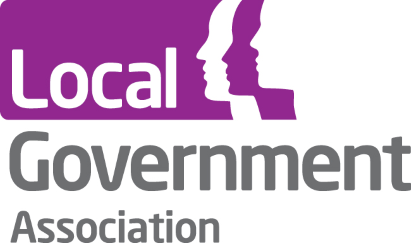
LGA Casestudy
Platform Features
Join the world’s leading organizations that trust Lumi Global with their critical meetings.
Join the world’s leading organizations that trust Lumi Global with their critical meetings.
Lumi Global has acquired Assembly Voting, a technology company specializing in end-to-end verifiable, cloud-based voting and election solutions.

Much has been written about AGM Season 2022 – not least the visibility of activists at AGMs, shareholder attendance being lower than anticipated after 2 years of absence, and the ongoing need for legislative change to allow companies flexibility with their meeting format.
But as you may have read from recent articles, whilst it is true that attendance at AGMs is down where Issuers have returned to a physical only meeting, many of those Issuers who chose a hybrid meeting format have been rewarded with greater attendance and more meaningful participation.
Moreover, ‘guidance’ being issued from the likes of the Financial Reporting Council and some of the proxy advisory firms are recommending hybrid to ensure shareholder enfranchisement, and to maximise the opportunities for good governance.
With all of this in mind, we spoke to Nick Ivory, Assistant Company Secretary at National Grid who was part of the project team for National Grid’s first hybrid AGM.
Tell me a bit about National Grid’s shareholder base, particularly what we would class as retail shareholders
We have a significant number of private/retail shareholders on the National Grid share register, handled by Equiniti, often with a small number of shares. Some of this links to the privatisation of electricity in 1990 and that traditionally we are a long term ‘hold’ stock being a utility with a decent dividend. We also have a very strong employee ownership culture amongst current and former colleagues.
And what about your AGM, traditionally. What did that look like?
Traditionally, the National Grid AGM was well attended – often between 300 and 500 shareholders in the room. Prior to the pandemic our AGM had taken place in Birmingham for a number of years.
The pandemic naturally changed our approach to the AGM, and we had a particular challenge in 2021 with some COVID restrictions still in place and with restrictions lifting so close to the AGM date. Our Chair, Paula Rosput Reynolds, who joined in 2021 also wanted a more informal and engaging style for the Board and shareholders.
When did you start thinking about the hybrid meeting format?
As with many organisations, 2021 was a challenging year when it came to planning the AGM, and we took the decision to strongly encourage shareholders to watch a live stream of the meeting online. We also provided the option for shareholders to pre-register questions online.
We started to consider hybrid meetings long before the 2021 AGM because we required our Articles of Association to be amended to allow for this type of meeting. The change of Articles received strong support at the 2021 AGM and then we were able to turn our attention to 2022.
2022 our AGM moved to London and as we moved out of the pandemic, we knew there would be a clear desire from some shareholders to meet in person once again, but we wanted to encourage a broader representation of shareholders at our annual meeting, and to give as many people as possible the option to attend.
Working with Lumi and Aspect we started putting plans into place for the July 2022 AGM, which was to be National Grid’s first ‘hybrid’ annual general meeting.
Before the AGM itself, what were your concerns around hybrid meetings?
Our concerns were broadly similar to those experienced by other organisations facing a hybrid AGM for the first time, and certainly from conversations with other Company Secretaries I got the sense that we weren’t alone!
Of course, we had security concerns – several energy companies experienced disruption from activists at their AGM and whilst that didn’t spill over into any kind of online disruption, it was something we monitored.
We did not know how many shareholders would turn up in person or online – this was our first non-COVID impacted London AGM and we didn’t have any view of how many people would join or whether having Q&As in person and online would become unmanageable. Or could it go the other way and we have no one join online.
And then, the “what happens if” question, particularly around what happens if the technology fails, or we have too many people arrive for the size of the room.
How did you mitigate these concerns?
We are fortunate that our AGM sits towards the end of the ‘AGM season’, so with the support of Aspect and Lumi we were able to monitor the successes, challenges and mitigation of risks at various other AGMs. This provided strong case studies for us to help mitigate concerns across stakeholders and provided for a strong case as to why this was the correct approach.
And of course, there was huge amount of due diligence completed by our IT and security teams together with you [Lumi] and our registrar, Equiniti. So, the obvious points around SOC2 compliance and ISO 27001 accreditations go a long way to mitigating concerns.
As always, we do a lot of contingency planning and we expanded this to scenarios or implications around holding a hybrid meeting. We prepped for all contingencies – with script variations depending on circumstance. We rehearsed, and rehearsed, and rehearsed again – and the pre-AGM technical rehearsal with key internal stakeholders was vital in giving our Chair, Group General Counsel & Company Secretary and our Board comfort in the technology so they could relax and focus on delivering a successful meeting.
And now sitting on the other side of National Grid’s first hybrid AGM, how was it?
We were delighted with our first hybrid AGM. Physical attendance is certainly lower than it was before the pandemic, but we didn’t have any expectations that online attendance was going to skyrocket. This is a long-term digitisation strategy for us, not a quick win to get higher attendance numbers.
Having said that, we had a strong number of online participants, and what was also pleasing was the opportunity it provided for our employee-shareholders to attend from their office or their home. Similarly, it opened the meeting to our international shareholders to join through BNY – our ADR registrar in the US.
It is also extremely positive for us that Hybrid enables shareholders to join from wherever in the country or even world that they may be. It can ultimately level the playing field.
What do you think are the main barriers for organisations to adopt hybrid as standard
From an Issuer perspective, there are still concerns about the clarity of the legislation and what is or isn’t permitted. There needs to be a review of the Companies Act in relation to AGMs.
A more positive, forward looking, digital first approach from key industry players would also be welcome – it’s too easy to do things the way they have always been done, to not push for change, but that change needs to happen.
There is a cost to adding the hybrid element to your AGM, so if your organisation has traditionally had minimal attendance I can understand why there might not be budget or appetite to add the ‘hybrid’ element. However, if, as a company, you want greater engagement, Hybrid could be the key to unlocking this.
And from a shareholder perspective, it’s much easier for shareholders to attend AGMs, especially if they are not directly on the National Grid share register. The number of directly registered shareholders is in decline, with more and more retail shareholders using investment and trading platforms, and for Issuers to benefit from greater attendance, it needs to be easier for ‘nominee shareholders’ to get to the meeting so they can engage fully with their shareholding. I expect this will get further traction this year and is emphasised by the recent article published by Thisismoney- Half of UK shareholders are blocked from attending AGMs
Contact our friendly experts to learn how we could transform your meetings.